A Tribute to Tim Sale
—by Nathan on November 28, 2022—
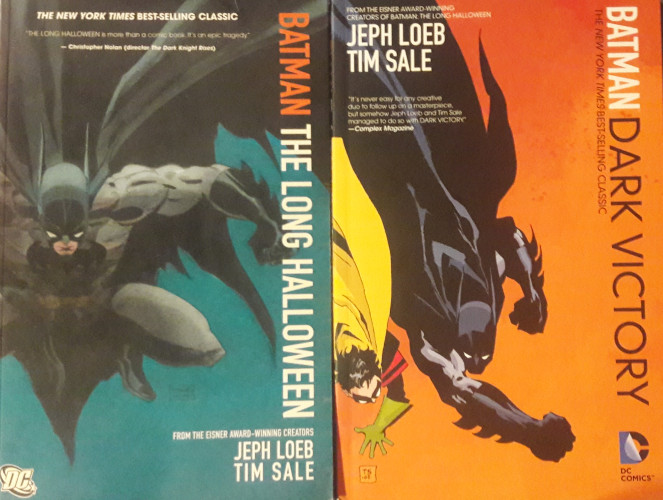
At some point during my early comic reading years, my dad allowed me to access the ground floor of our local public library and browse the graphic novels and comic collections contained there. This was huge for me, because this floor held comics generally reserved for adults, teens or even just older, more mature readers in general. Up until then, I’d grabbed volumes from the children’s area in the basement, the kid-friendly material. My father went up with me and perused any volume that caught my attention; he understood certain series and stories contained material which he did not feel was acceptable for my age. I genuinely appreciate his efforts in keeping me safe from potentially poorly influential material…but this is not a post about the benefits of censorship.
I’m grateful to him for letting Jeph Loeb and Tim Sale’s limited series, Batman: The Long Halloween, pass muster. Even if Loeb and Sale’s epic crime saga hadn’t escaped his protective gaze then, I am almost certain I would have discovered the series when I became cognizant enough to select suitable reading material. The Long Halloween is routinely ranked alongside The Dark Knight Returns and The Killing Joke as one of the greatest Batman stories ever told. On a personal level, it is, to this day, my favorite comic story of any I’ve ever read.
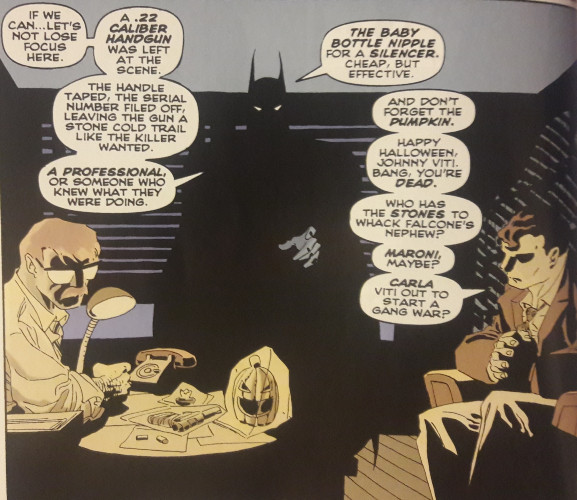
I don’t recall the exact feelings I experienced when first reading the series, other than a certain joy. Poetically, I read The Long Halloween around Thanksgiving, and I have always held an affection for that particular holiday (Happy Late Thanksgiving 2022 for anyone out there, btw). I am almost certain the joy that came with the long-held traditions of watching the Macy’s Thanksgiving Day parade and eating gobs of greasy goodies symbiotically entwined itself with reading The Long Halloween for the first time.
I couldn’t tell you, either, of when I definitively decided I appreciated Loeb and Sale’s murder mystery above practically all other comics I had read until then. Did it take days of ruminating afterward on the series for me to understand how thought-provoking the whole narrative was? Was I even capable of such philosophizing at that age? Or was it just the sheer allure of Loeb’s masterful prose, highlighted gorgeously by Sale’s painted pages, that kept coming back to my mind? Whatever the reason, the story stuck with me. It still does.
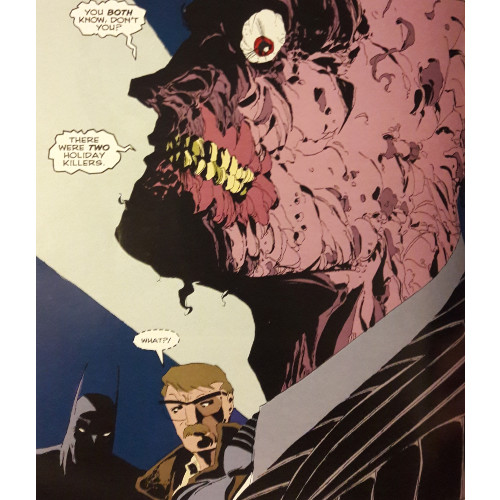
These days, I can testify I love The Long Halloween for both the writing and the art. In discussing comics in general, I find it much easier to describe the story than the art which tells it. I’m not an art student; I took a few classes when I was younger, but I never gained an appreciation, learned the lingo, or noticed any talent. I can tell you that Sale’s style, for The Long Halloween and other narratives of his I’ve read, has a wonderfully impressive painted feel to it. It doesn’t feel like Alex Ross’ exquisite lifelike style, where characters look perfectly human; look no farther than the Joker in a myriad of Batman tales Sale illustrated or the Green Goblin in the opening pages of Spider-Man: Blue, and you’ll find that Sale was just at home in the world of the cartoonish as he was at making characters feel real. His people are people, yet they’re not constructed the same as Alex Ross would conceive.
I feel I’ve noticed Sale's stylistic flairs over the years–the way, in particular, that he drew eyes always felt very unique. They were, for me, an identifying marker of his work. If I was sifting through the variant covers collected in a volume, eyes he’d clearly drawn would stop me short, and I’d hurriedly scan the rest of the image for his signature–often, his first name written right above his last, with the date inscribed immediately below. Again, as an individual who has never officially studied art, in comics or otherwise, I can’t claim any special understanding of its intricacies. Through the simple experience of loving his work, I learned to recognize Sale's style, alongside other favorites such as John Romita Jr., Mark Bagley, Humberto Ramos, John Byrne, and Jim Cheung.
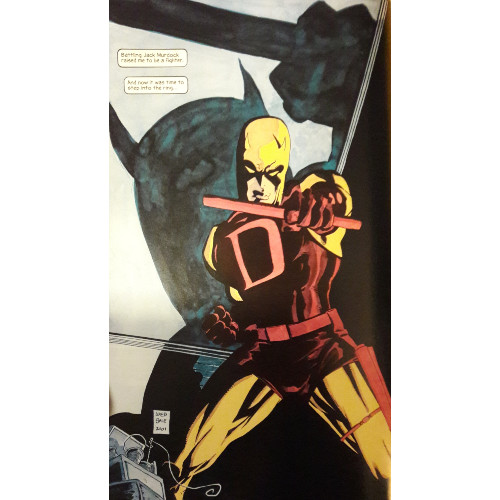
I have not read many of Sale’s stories where he wasn’t paired with Loeb; Sale and the late Darwyn Cooke’s “Kryptonite” six-parter in Superman: Confidential may be the only exception. I even own or am in the same vicinity of a few stories he did with Loeb– a late-90s Challengers of the Unknown series and Hulk: Gray–which I have not read either, so I cannot claim to have an all-around appreciation for the scope of Sale’s storytelling capabilities. My experience is limited to the Batman work he did (Long Halloween, Dark Victory, and three Halloween specials predating his and Loeb’s magnum opus), some of his and Loeb’s work for Marvel (Spider-Man: Blue and Daredevil: Yellow), “Kryptonite,” and Superman: For All Seasons, which I read in the wake of Sale’s passing. Each story I have read, however, showcases a unique side to the artist.
What blew me away about Spider-Man: Blue the first time I opened the story was how eerily reminiscent it was. Sale and Loeb’s first issue flashes back to a scene taken almost directly from Stan Lee and John Romita’s Amazing Spider-Man #40: Spidey, unmasked and imprisoned by the Green Goblin, recently revealed to be Norman Osborn, dukes it out with the grinning gargoyle for the then-final showdown between these fabled arch-enemies. Along with ASM #39, the issue makes up one of my favorite Spidey arcs, and Sale wonderfully infuses the scene with his own design while aping Romita. Throughout the entire series, characters like Peter, Gwen Stacy, the Goblin, the Vulture, and Kraven the Hunter feel as if they’re pulled straight from the original issues as drawn by Romita. Sale wisely never updates the characters. He hews as close to Romita as possible without losing his own flair (it’s those eyes, remember?). His Spider-Man is often set against sparse backgrounds, allowing Steve Buccellato’s colors to make Spidey pop in the foreground. Same with the villains.
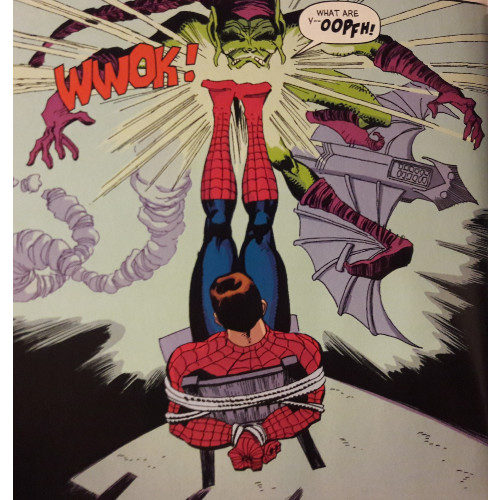
Sale’s Batman work has such a distinctively different feel to it. Colorful characters pop up, for sure, but a deeper sense of menace permeates the pages. One of my favorite images from Sale’s bibliography is a two-page spread in the second-to-last Long Halloween issue. A Who’s Who of Batman’s rogues gallery, who have mostly appeared already in the preceding pages, assemble in Roman Falcone’s office. Like Spidey, they’re colorfully clad, but their garb is muted. Shadows play across the room, disguising the ghoulish Two-Face, not yet revealed to the audience. Elsewhere, Sale creates a twisted and aged Arkham Asylum, a few grim sewer sequences, a barely lit interrogation scene, and murders colored in blacks, whites, and grays.
Beyond his recognizable artistry, Sale played to the strengths of each narrative he composed. Artistically, Superman For All Seasons, as others have compared, feels pulled from a series of Norman Rockwell paintings–from a country house’s cluttered porch, to a splash-page dinner complete with ham and the implication of pie, to a gorgeous sunset enjoyed by Clark and Jonathan Kent. Sale's Smallville is simple yet vibrant, a farming community with recognizable geography, notable locations, and a sense of quaint, comfortable living. A far cry from crime-ridden Gotham. And equally distant from Metropolis, showcased in both For All Seasons and “Kryptonite”; towering, gleaming skyscrapers evidence a city of corporate power and financial security. Gotham’s back alleys and bars are replaced with board rooms, penthouse suites, busy offices, and luxurious casinos.
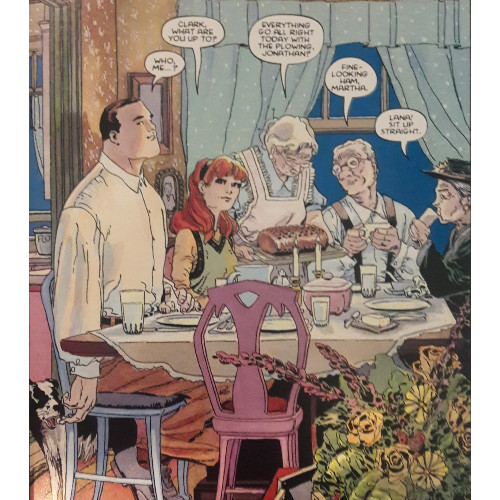
Sale capably gave each environment an identity distinct from the others yet intentionally geared towards the purpose of each story. His Metropolis contrasts his Smallville, particularly in For All Seasons, as a metaphor for a Clark Kent aging out of the hometown of his youth and growing into the possibilities of a large city. His Gotham, dark and seedy, represents the grim world a rather young Batman finds himself protecting (The Long Halloween distinctly takes place shortly after Frank Miller’s "Year One," though published over a decade after); it’s a world where the purple-garbed Joker can rupture a family’s Christmas, or a silent Dark Knight can watch protectively from the rooftops. Violence and justice, despair and hope, damnation and defiance...all intertwined.
I want to read the stories I have yet to peruse, including Hulk: Gray and Challengers, and I’d love to revisit some stories I haven’t perused in a while. I don’t find the three Halloween narratives (collected in a volume titled Batman: Haunted Knight as impactful as The Long Halloween, but I’m occasionally reminded of two distinct pages Sale drew of Batman perched above a gargoyle: the first casts the Dark Knight in silhouette, framing his form with rain; the second illuminates him and the gargoyle as lightning crackles without a sound. Two distinct moments, frozen, yet each given their own page, allowing the reader to linger on a single second divided between two pages. It’s beauty like that which makes Sale’s work so remarkable.
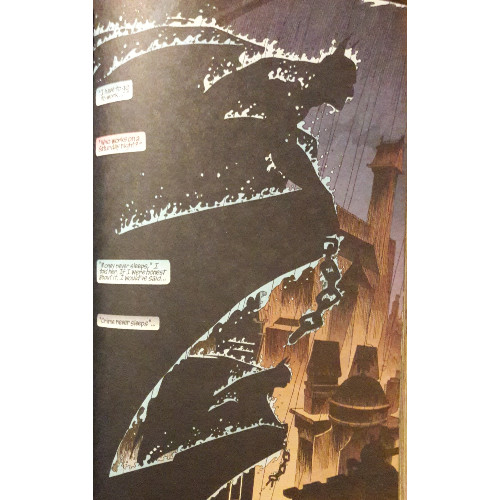
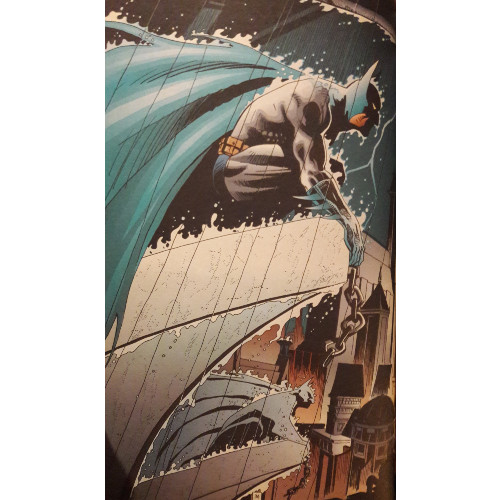
It’s been a while since I’ve read Dark Victory, too. I devoured it when I first received it, gloriously reentering the world Loeb and Sale introduced in The Long Halloween. I fed too fast and felt like I’d swallowed too much peanut butter, the enjoyment lost as a lump slipping into my gullet. Not enough taste, too much material all at once. During my second reading, I slowed down, soaked in the details. The image of a former GCPD commissioner, his face etched with worn lines, his head begging for more than lazy silver strands, remains ingrained in me. Doesn’t that point to an artist’s talent, when they can plant in your memory the mundane as well as the magnificent?
I started writing this post months ago, back when I first learned of Sale’s passing in June. We’ve lost some wonderful talent this year–Brian Augustyn, George Perez, Neal Adams, to name a few–and as much as I appreciate those creators, none were as influential on my reading experience as Sale. I like Perez’s work on Infinity Gauntlet and Crisis on Infinite Earths, and I recently purchased his and Marv Wolfman’s “Judas Contract” arc in New Teen Titans, which I hope to read soon; I really, really love Adams’ work with Roy Thomas on X-Men, though I have yet to check out some other narratives he illustrated, such as his work on Avengers or Green Lantern. These guys were supremely talented, and from a historical standpoint, had a monumental impact on the industry. But Sale’s loss hits a bit different.
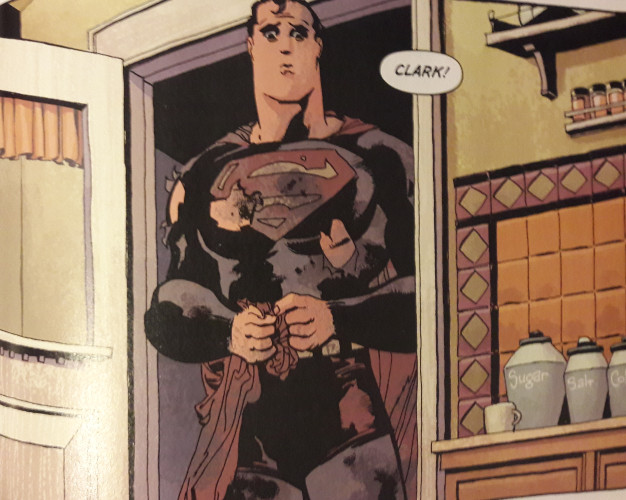
I didn’t read Crisis until about a year ago, and I came to Gauntlet shortly before the Infinity War film. I did originally read Thomas and Adams’ X-Men run in high school, but I don’t think I appreciated Adams’ art the way I do now (guy was genuinely ahead of his time–it’s a cliche, I know, but just look at the stuff he was producing in the early 70s). Tim Sale has been with me since almost the beginning of my comics reading experience. I dove into this write-up when he first passed, eventually reaching a point where I felt inadequate in expressing my love of his work, setting it aside, and losing track of it. I'm glad I found this unfinished piece now, and I'm glad I'm giving it another shot.
Because I can’t tell you all the technical bits Sale injected into his work, and I can’t quite grasp how his art works its way past my eyes and into my brain and causes me to go, “Yes, this I like,” where other art may not hold the same appeal. I don’t quite get it. Like I said, I’m no art major. I base my impressions of a story more on my emotions rather than by judging an artist’s linework, use of color, shading, inking, etc. Look at the Superman panel above--with a charred costume and a torn cape, the Man of Steel stands in the doorway of his parents' kitchen, looking like a dog that just chewed up your favorite pillow. It's those eyes again, brimming with failure, maybe even guilt or shame, at a recent defeat. I know the context for that panel; you may not. But you can see the emotion anyway, even devoid of context. You can tell what flickers behind Clark's eyes in that moment. You see it in the way he clutches the remains of his cape like an old blanket. This strong, imposing hero who fills the doorway but appears more like a child coming before a parent to ask for a drink of water or with a scraped knee. You don't need to have an art degree to see all that. Whether he was penciling the greatest murder mystery of all time, Spider-Man kicking the Green Goblin in the kisser, Daredevil zipping hither-and-yon on his versatile billy club, or Superman coming home to Ma and Pa Kent after a particularly bad day, Tim Sale was a storyteller. His panels are packed with strong beats, moments forever frozen. I will miss the stories he never gifted us and fondly cherish the ones he left.